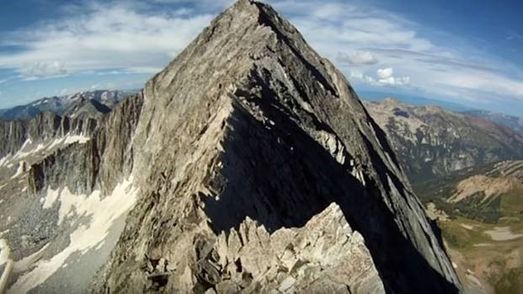- Home
- :
- Resources
- :
- Admin Resources
- :
- Exploring Solutions
- :
- Preparation is Key to Mitigating Travel Risk
This content from the SAP Concur Community was machine translated for your convenience. SAP does not provide any guarantee regarding the correctness or completeness of this machine translated text. View original text custom.banner_survey_translated_text
Preparation is Key to Mitigating Travel Risk
- Subscribe
- Bookmark
- Report Inappropriate Content
As I was traveling back home from our annual user conference, SAP Concur Fusion which was held in San Diego this year, we flew over the snow capped Rocky Mountains and just south of the beautiful town of Telluride. Can you see the Telluride airport runway in this picture? Good eyes if you did, as the airport is well known for white knuckle landings – I can’t imagine why. But the beautiful scenery and the fact that I was looking at it from 35,000 feet made me realize that I was surrounded by two things I that inspire me – traveling and exploring mountains.
What I love about both is that they both satiate my curious nature. As I travel to different cities, what will I see, what will I smell, what will I touch, what will I taste, who will I meet? The same really applies to exploring mountains, particularly as I trek for miles to summit one of Colorado’s 14ers. What also makes both experiences exciting (and slightly scary) is the element of the unknown. What risks will I encounter? WILL I BE PREPARED?
As I prepare for either excursions, remarkably, many of the physical items I pack are the same - maps, compass, whistle, flashlight, first aid kits with medications, anti-bacterial hand wipes, mobile phone with extra battery pack. There’s also similarity in terms of how I inform the right parties about my plans. In the case of heading to the mountains, I let my family and friends where I am headed, what trails I intend to take, what my anticipated start/end times are. In the case of traveling, particularly when going international, I make copies of my visa and passport to give to family or friends who are back home (I also take copies with me and hide them as best as I can). I also share with them a copy of my transportation and lodging itineraries via TripIt. I also ensure I register with the US State Department STEP program (https://step.state.gov). Finally, I ensure that I have proper travel insurance coverage because high quality Western-style medicine which I am used to back home could become incredibly costly in certain areas of the world.
But what I feel is MOST important of all prior to any destination is knowing what I am getting into. I would never attempt Capitol Peak without researching it first. Here’s a video of the “knife edge” of Capitol Peak - https://www.youtube.com/watch?v=f2UTXNs4_oE. OK, frankly, I would never attempt Capitol Peak at all. That one takes a special kind of crazy, errrr, confidence. KNOW YOUR RISK TOLERANCE AND BE TRUTHFUL TO IT.
Capitol Peak image – source: Denver Westword
And the same applies when I travel to an unknown destination. There are plenty of factual and informative resources online to give me valuable information. Personally, I rely on destination intelligence that is being provided by our SAP Concur risk intelligence partners, Healix and Riskline – a benefit that I am very grateful for as an SAP Concur employee. I also really find the new “Neighborhood Safety Scores” feature in TripIt Pro very insightful. As I read through all the resources I rely on as a U.S. citizen, it is refreshing that advice for “special travelers”, such as solo-traveling females and those who are in the LGBTQ community, is now given more attention because those travelers have a different cross-border travel risk profile than a middle aged dude like myself.
Travel managers – are your travelers prepared, educated, equipped for their international journeys? For example, on my upcoming trip to Beijing, I’ve prepared my technology to ensure I will stay connected to my family, friends, and coworkers. I’m also aware that to dial for emergency services, it is not 911 like it is back home here in the US. Rather, it is 110 for police, 120 for ambulance, and 119 for fire. I was also provided a mobile app by my employer that has a "panic button" which, when activated, will send an immediate notification to my travel security team. I’ve also ensured I have the proper vaccinations – food borne Hepatitis A is something I need to be concerned about. Proper preparation of your travelers is an important component of a duty of care program.
For the traveler, the result of proper preparation is wonderful. As I go on my trek or arrive at my destination, I experience a heightened sense of confidence. I am able to experience and enjoy more. I am not scared but rather I travel with a relaxed awareness of all that is around me. If something occurs that was unplanned, I will be in better position to deal with the situation – unlike when I badly injured my ankle in Istanbul many years ago which I look back at and now realize I handled poorly. Finally, when I get back home, I think back and review what worked, what didn’t work, what could I do better for next time? For proper risk management is not a final destination. It is an ongoing process of improvement.


